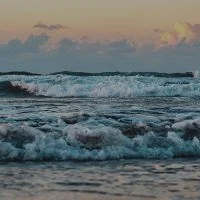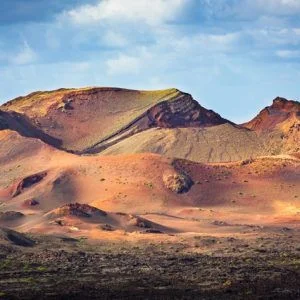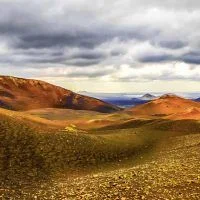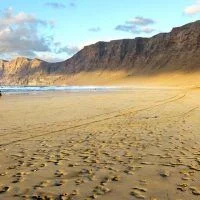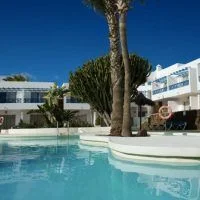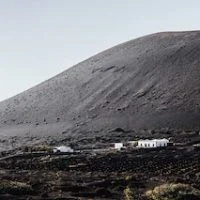WHAT TO SEE IN LANZAROTE
If you’re thinking about visiting Lanzarte you must know it is one of the most charming islands in Spain where you can admire plenty of tourist attractions such as the National Park of Timanfaya.
The island’s wonderful warm weather, that lasts throughout the year, makes it possible to enjoy its spectacular beaches within a natural environment full of volcanic landscapes, its great gastronomy and a wide range of leisure activities such as surfing.
Lanzarote is located within the canary archipelago. Its the third most populated island (about 150000 inhabitants) behind Tenerife and Gran Canaria. Arrecife is the capital city and is home to the main seaport and the only airport in the island.
ATLANTIC OCEAN-BATHED BEACHES
Lanzarote is located in the heart of the Atlantic Ocean and all the beaches and cliffs that surround the island belong to Atlantic waters.
There is a wide variety of beaches ranging from quiet and wild surrounded by nature to more crowded and popular among tourists.
Climate is a key factor to enjoy the beach. Lanzarote’s temperatures are around 25C degrees all year round. Days are long, with many hours of sunshine, and there is little rainfall.
Most beaches are located in untamed natural environments surrounded by volcanic landscapes that contrast with white sand and crystal-clear water beaches, thus creating a unique scenery that can only be enjoyed in this island.
Alternatively, one can find more crowded beaches next to tourist areas that remain equally quiet and comfortable.
There are other famous beaches in Lanzarote that, because of their weather conditions, are very popular among those who practice surf, windsurf, dive or other water sports.
TIMANFAYA VOLCANO TOUR
In Lanzarote there are around 300 volcanoes registered and two mountain ranges, the Famara Cliff, in Teguise, and the Betancuria Massif in Yaiza.
You can’t miss the opportunity of doing the Volcano Tour when visiting the island.
The volcano tour is done by bus (or “guagua” for the locals) in company of a guide. It’s 14 km long and it starts at the Hilario Islet.
Throughout the tour, you’ll have the chance to admire the beauty of unique landscapes surrounded by volcanic structures that are characteristic of the Timanfaya and that were formed during six consecutive years, between 1730 and 1736, and subsequently in the XIX century, in 1824.
Enjoy a walk between different kinds of lava (“aa” or “pahoehoe”), extremely rough rocks, a great variety of black, red, orange, brown and ochre colors and without any vegetation.
The volcano tour runs through the pyroclastic fields in the Valley of Tranquility until the Fire Mountains while you enjoy wonderful sceneries such as the Timanfaya Craters or the Corazoncillo Caldera.
This is a must-do activity for those visiting Lanzarote as it offers the opportunity to learn the island’s recent history on the Timanfaya volcanoes and admire unique and completely stunning landscapes.
UNIQUE LANDSCAPES
Lanzarote’s nature, characterised by volcanic landscapes, is one of the island’s main tourist attractions. It is also worth stressing the island’s native fauna and flora.
Lanzarote’s natural heritage is such that a 42% of its territory is protected, including important areas such as the National Park of Timanfaya, La Geria, Teneguüine or Jameos del Agua.
The island was declared a Biosphere Reserve by UNESCO in 1993. Then, in 1194, several sites were declared Natural Monuments:
– La Corona volcano, Haría.
– Los Ajaches, Yaiza.
– Los Naturalistas Cave, La Geria.
– Islet of Los Halcones, Yaiza.
– Fire Mountains, Yaiza.
COLORS OF THE ISLAND
Lanzarote is an island of rare colors that form part of the magic hidden in this piece of land located in the middle of the Atlantic Ocean.
Without any doubt, the color that stands out over the rest is black and it derives from the volcanic lava you can find almost everywhere in the island.
In contrast with black, we find traditional perfect white buildings, both in rural and urban areas. White is the prevailing color in most houses.
Earthen brown dyes Famara’s mountains and cliffs. We also find different shades of brown in the sand dunes of the beach, ranging from very clear to dark brown and even golden.
Finally, green palm trees and vineyards contrast with the black color volcanic structures creating a beautiful effect that is very pleasing to the eye. Not to mention the sea’s almost blue-turquoise color that stands out in coastal areas.
VINEYARDS IN LANZAROTE
Vineyards are very common in the island of Lanzarote. In fact, they are quite peculiar because they grow in volcanic soil.
With approximately 2000 hectares of land used for vine cultivation, Lanzarote’s Designation of Origin is one of the widest and most profitable in the Canary Islands producing two million bottles of wine every year.
Vineyards spread over the 7 municipalities in Lanzarote: Arrecife, San Bartolomé, Tías, Tinajo, Haría, Yaiza and Teguise. However, the areas located in the central part of the island are the most popular.
Although there is a certain preference for white wines, one can find different grape varieties in Lanzarote such as:
White grape: malvasia, breval, burrablanca, diego, moscatel, white listan and Pedro Ximénez.
Red grape: negramoll (mulata) and black listan or common black.
ARCHITECTURE IN LANZAROTE
Architecture in Lanzarote keeps traditional canary architectural roots with white walls and flat roofs decorated with rounded or dome shapes.
One can also appreciate certain colonial style of Portuguese and Andalusian influences that is reflected in wooden balconies and inner patios.
The finishing touch of the architecture in Lanzarote is provided by César Manrique. The artist was born in Arrecife in 1919 and had great architectural skills. He left his mark all over the island to the extent that today he continues to be an inspiration to new architectural works.
“For me it was the most beautiful place on Earth and I realised that if they were able of seeing the island through my eyes, they’ll think the same as me.”
César Manrique
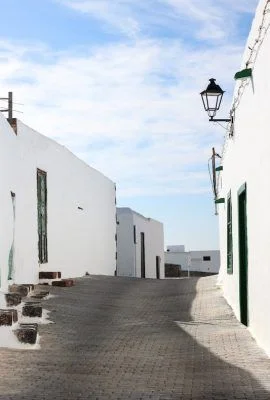
HISTORY OF LANZAROTE
The history of Lanzarote dates back to the year 500 BC when it became inhabited for the first time.
The first European to arrive at the island was Lancelotto Malocello, in the early XIV century. That is where the name “Lanzarote” comes from.
During the XVth century, thee Canary Islands were conquered by part of the crown of Castile, who established a feudal system that would last until the XIX century.
Volcanic eruptions began in 1730 and lasted 6 years during which entire villages were destroyed and the island was completely transformed. But those were not the only ones. Another difficult period came in the XIX century with the volcanic eruptions of 1824.
It wasn’t until the second half of the XXth century that the tourist appeal started to increase. In fact, it became the main source of income of the island.
This was partly thanks to César Manrique who contributed to positively promoting the island’s architecture and his passion for showing it globally.
The opening of Lanzarote airport marked the opening up of the island to the European and international tourism.
Today, Lanzarote’s climate and landscapes are the island’s most popular attractions.




